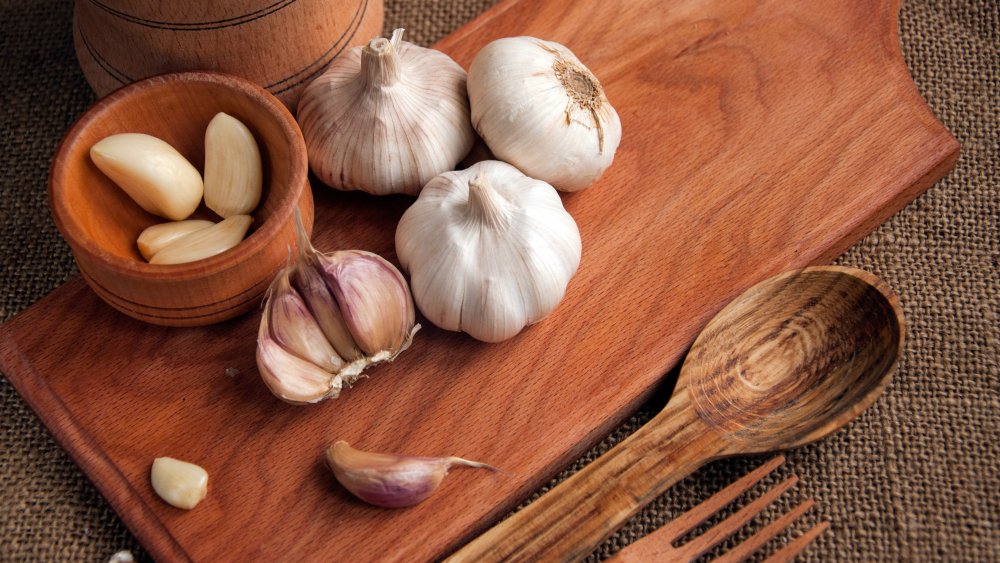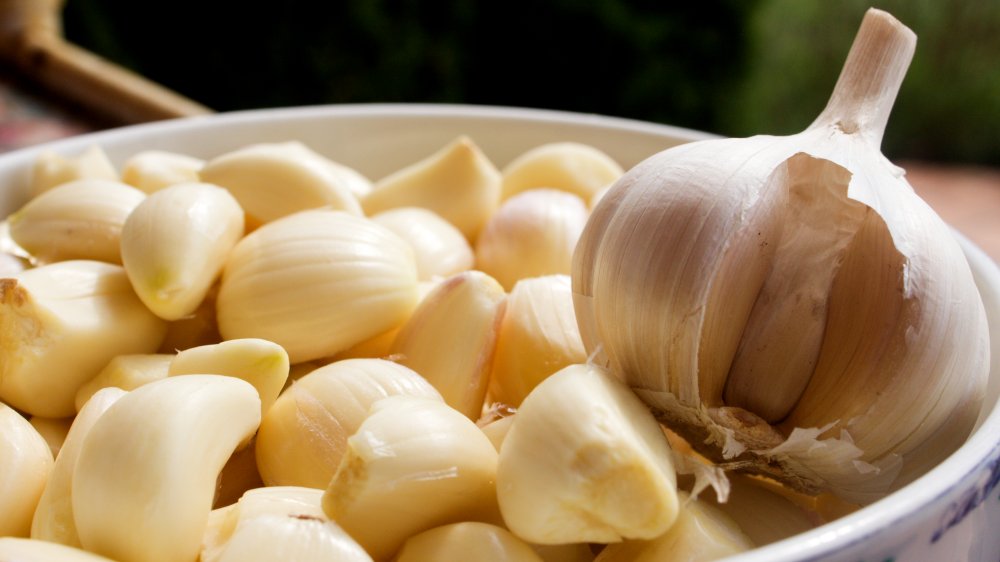You've Been Storing Garlic Wrong. Here's The Right Way To Do It
The late John Milner, a prominent scientist and former director of Penn State's nutrition program, once described garlic as "the catsup of intellectuals" (via Penn State News). America must be full of intellectuals because in 2015, Penn State Extension reported that 400 million pounds of garlic are grown in the U.S. each year. While many people – and vampires – would probably describe this vegetable's smell as pungent and maybe a little off-putting, garlic pretty much intensifies the flavor of any dish it touches and just makes it better. But if you are among the contingency of people that stores it in a bowl on your countertop or on the shelves in your refrigerator, using a couple of cloves as needed, you've been storing your garlic all wrong. In fact, you've probably reached into the refrigerator after a few days, found your garlic sprouting, and had to toss it. We've been there, too.
The ideal storage conditions for fresh garlic are dark and dry with mild humidity and a temperature ranging between 60 and 65 degrees Fahrenheit (via Healthline). While mesh bags or woven baskets would be the simplest storage options (via Good Housekeeping), there are actually several ways to store garlic and prolong its shelf life.
How to store garlic properly
Fresh garlic should remain completely intact during storage. Once broken, a garlic head probably won't make it past 10 days. But what can you do if you've peeled too many cloves out of their paper-thin skins? Good news. You can store these in the refrigerator, ideally in an airtight container, which should sustain it for up to two weeks.
What if you've simply bought more garlic than you can possibly use before it starts to sprout or worse, gets covered in yucky, black mold? Apparently, you can roast your garlic heads in their skins and all – no peeling required. Roasted garlic can be stored in your refrigerator for up to two weeks or in your freezer for up to three months (via The Kitchn). Roasted garlic is great for sprucing up pizza, smearing all over crusty French bread, adding to sauces, and just about any recipe you want to add a little extra flavor to.

